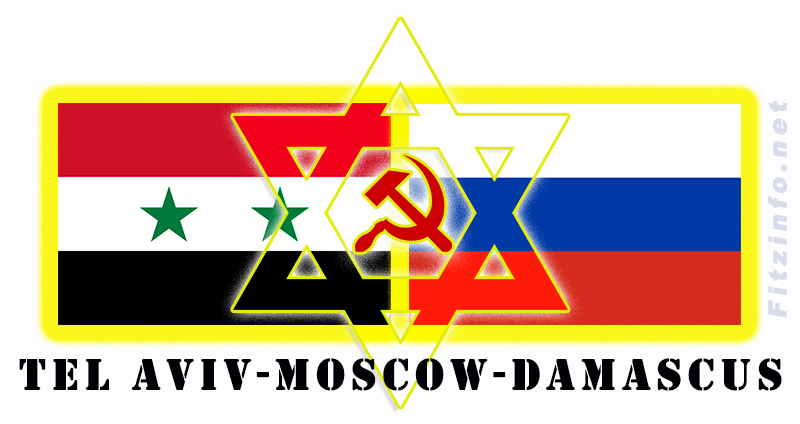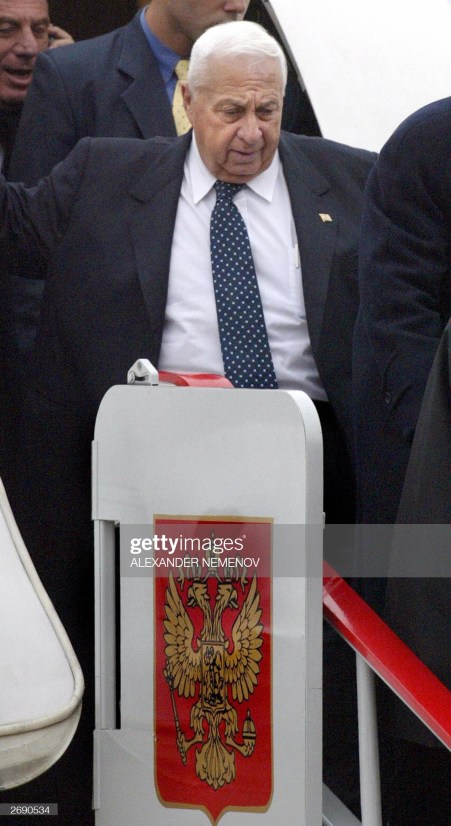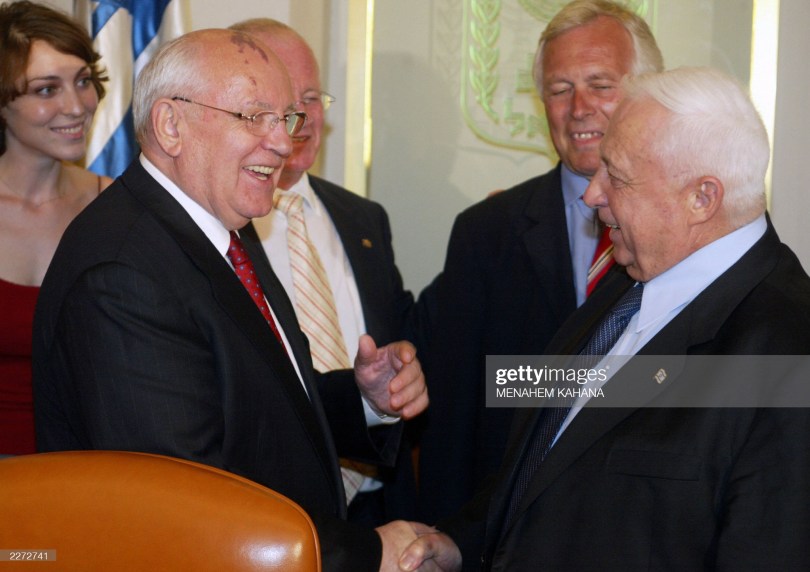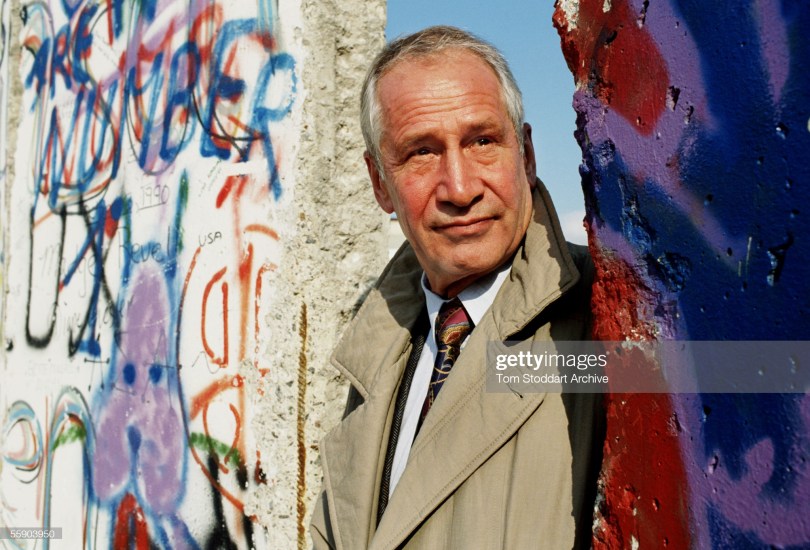 By EIR
By EIR
July 24, 1985 Anno Domini
Excerpted from The Russian Imperial War Plan for 1988, pp. 182-189
In late 1982, Israeli intelligence sources reported to EIR that then-Defense Minister Ariel Sharon made a secret trip to Greek Cyprus to meet with two ranking officials of the Soviet GRU, the military intelligence service. The subject of those secret discussions was an Israeli-Soviet quid pro quo to drive the United States out of the Middle East. In exchange for Israeli complicity in a series of anti-American covert diplomatic and low-intensity military operations, the Soviet Union would “guarantee” Israeli control over an expanded piece of eastern Mediterranean turf, fulfilling the “Greater Israel” designs of the faction associated with Sharon; and would gradually allow for the emigration of a large number of Russian and Eastern European Jews to colonize the West Bank of the Jordan River, thus de facto consolidating Israelis 1967 land grab.
This “Greater Israel” scheme prefigures a parallel emergence of a “Greater Syria,” constituting the second satrap of the future Soviet domination of the eastern Mediterranean. The dismantling of Lebanon and the virtual extermination of the Palestinian population in successive genocidal campaigns by the Israeli Defense Force, the Syrian Army, the Syrian-backed Abu Musa radical Palestinian front, and the Amal Shi’ites of Lebanon—also agents of the Alawite Brotherhood ruling Syria—demonstrated on the field of battle the potential for Hobbesian coexistence between “Greater” Syria and “Greater” Israel.

While no published sources have corroborated the particulars of the reported Sharon-GRU session and the strategic deal consolidated there, subsequent events have clearly demonstrated that Israel is no longer America’s “leading ally” in the Middle East, despite continuing howls to this effect from U.S. State Department, Eastern Establishment, and Zionist Lobby voices.
Three factors, representing a dramatic change in the direction and control over Israeli politico-military policy, provide the backdrop to the emerging Tel Aviv-Moscow-Damascus pact:
- The demographic shift within the Israeli population. Over 50 per cent of the Israeli population is now Sephardic, Middle Eastern-born. The shift from a Western European, Judeo-Christian cultural matrix to an Oriental Semitic cultural matrix has been identified by recent Israeli writers as a repudiation of Western values and a re-emergence of a Jewish “kabbalistic” brand of fundamentalism. This shift has been aggravated by the fact that over one-third of the Israeli citizenry, predominantly Ashkenazi pre- and postwar European émigrés, have left Israel and returned to the United States of Western Europe, thus drawing out of Israel some of the leading scientific and technological strata of the population. A radical, fundamentalist peasant caste has thus emerged in recent years as a prominent political force, providing the social base for Ariel Sharon’s drive for power under the slogan “Arik, Arik, King of Israel.”
This “Oriental” shift has been augmented by the emergence of a Russian-Jewish dominated New Right movement in Israel, heavily penetrated by the KGB. This New Right movement is in a prominent position within the Jewish Underground, or, Temple Mount movement [Chabad], which has revived a Khomeiniite brand of Judaism preaching the rebuilding of the Third Temple of Solomon. The other predominant grouping within the Temple Mount conspiracy is a powerful and wealthy community of Syrian-born Jews from the Turkish border region of Aleppo, who reportedly maintain deep but quiet ties to the Alawite Assad leadership of Syria, also Aleppo-based.
- The collapse of the Israeli economy. Whereas, Israel’s inflation rate was 20 per cent in 1975, it is now an astounding 180 per cent, with interest rates on certain categories of loans over 210 per cent. While exports of citrus and other real economic products have collapsed and overall exports stagnated, official Israeli arms exports have increased sixteenfold over the last decade. Official exports of arms and diamonds in 1983 accounted for 60-70 per cent of Israel’s total exports. The unrecorded smuggling of drugs, diamonds, and weapons has massively increased, placing Israel in a leading position within the overall worldwide “unofficial economy”—i.e., the arms-for-drugs black market.
Within this arms-for-dope bazaar, Israel has entered into documented barter dealings with Khomeini’s Iran, providing spare parts for U.S. equipment originally sold to Iran during the reign of the late Shah, in clear and brazen violating of U.S. law. Through Lebanese channels centered around the Chouf Mountains-based Chamoun clan, the Sharon faction additionally entered into co-operative business ventures, including massive West Bank land scams, with Bulgarian foreign trade bank Litex. The latter arrangement was consummated in an October 1982 meeting at the Chamoun family Chouf mountain retreat at approximately the same time that Sharon was cavorting with the GRU on Cyprus.

The singular focus on building Israel’s arms industry was expressed in clear anti-American terms in the 1981 Meridor Memorandum, drafted by Ya-acov Meridor, a member of the former Israeli Prime Minister Menachem Begin’s cabinet. The memorandum was ostensibly part of the U.S.-Israeli letters of understanding: “We shall say to the Americans: ‘Don’t compete with us in Taiwan…South Africa…or the Caribbean, or in other areas where we can sell weapons directly…. Let us do it. Sell the ammunition using a proxy, Israel will be your proxy.’”
From its current status as the world’s seventh-largest arms exporter, Israel’s defense sector has mapped out an ambitious program to place Israel in the number three spot over the next several years. At the heart of this drive has been an extensive lobbying effort into the Reagan administration and the U.S. Congress, to force the release of previously classified stealth and other technologies to Israel for the production of the Lavie jet, a joint Israel-Republic of South Africa production venture. This would give Israel the additional delivery system capabilities, as well, for the rapid development of an independent intermediate-range nuclear capability.
On repeated occasions, this particular Israel-South Africa connection has been caught funneling state-of-the-art U.S. computer technologies to the Soviet Union. [Operation Talpiot].
- The Lebanon invasion of 1982 and its aftermath. In June 1982, Ariel Sharon launched the Israeli Defense Force invasion of Lebanon on the pretext of assaulting Palestinian terrorist bases behind the attempted assassination of the Israeli ambassador in London, Shlomo Argov. The action marked a decisive breach in U.S.-Israeli relations that accelerated Sharon’s openings in Moscow and Damascus. Sharon launched the operation on the basis of personal assurances from the Secretary of State, Alexander Haig, that the United States would fully support the Israeli invasion. When the United States—already at that moment caught in the ringer of the Malvinas War—harshly rebuked the Israeli move and President Reagan took the unprecedented step of firing Hail, Sharon wrote off the United States as an “unreliable ally,” and took his business to Moscow and Damascus, where more “practical” minds supposedly prevailed.
When every effort from inside Israel to dislodge the butcher Sharon from power failed, a deep cultural pessimism took hold in the country that merely accelerated the radical fundamentalist drive to impose a Sharon dictatorship.
Beginning in 1984, a more open phase of diplomatic dealings with Moscow began, through the personal “shuttle diplomacy” of Edgar Bronfman and Armand Hammer. Both men made a series of trips to Moscow during the Andropov and Chernenko periods, to negotiate a broad-based Moscow-Tel Aviv re-approchment involving Jewish emigration and anticipated official recognition of Israel by the Soviet Union. According to Canadian sources, this was paralleled by an increasingly public role of the Bronfman family, particularly Charles Bronfman, as the semi-official channel between the Canadian and East German governments. Privately, Canadian intelligence sources have told EIR that this Bronfman-East Germany channel is directly into Gen. Marcus (“Misha”) Wolf, the number two man in the East German Ministry of State Security (MfS). The son of a German-Jewish Communist Party official who fled to Russia during the Hitler period, Wolf has been identified as the single most powerful figure in the MfS and a close personal associate and protégé of Marshal Nikolai Ogarkov.

The Sharon Plan to destroy Lebanon, and divide the spoils between Syria and Israel, slaughter the Palestinian population there, transfer the dirty-money operations previously based in Beirut into the Israeli banking system, and convert the West Bank into a Russian émigré-populated real estate boondoggle, was, in fact, a corollary to the Kissinger Doctrine elaborated by the former Secretary of State at a July 23-24, 1982 secret meeting at the Bohemian Grove in California. In that address, Kissinger called for the United States to strategically withdraw from 75 per cent of its global commitments and assume a more modest role within a concordat of Western nations modeled on the Holy Roman Empire of the post Treaty of Vienna period.
Convinced by the Reagan administration’s failure to fully support the invasion of Lebanon, that the United States must be punished by humiliating setbacks within the eastern Mediterranean, the Sharon group in Israel provided consistent aid and comfort to the Shi’ite terrorist offensive against the United States, beginning with the February 1983 bombing of the U.S. embassy in Beirut that wiped out the entire U.S. CIA station for Lebanon.
The Tel Aviv-Damascus Hobbesian deal with Moscow’s blessing was consummated during April-June 1985 through the following sequence of events that culminated in the TWA 847 hijacking.
- In early April 1985, Israeli forces entered Southern Lebanon and rounded up over 700 Shi-ites, trucking them across the Israeli border into a detention camp. The mass hostage-taking was aimed by the Sharon group, now strongly allied with Defense Minister Yitzhak Rabin, at forcing Amal leader Nabih Berri to reach a security pact with Israel assuring the permanent elimination of Palestinians from southern Lebanon. On April 5, the Reagan administration denounced the Israeli move as a violation of the Geneva Convention and demanded the unconditional release of the “hostages”.
- On May 14, a top Israeli intelligence official met with the head of Amal intelligence, a known Syrian intelligence asset, in southern Lebanon, soliciting a negotiating package that would lead to the relase of the Shi’ite hostages inside Israel. The terms proposed by the Israeli official reportedly called for an Amal action against the United States that would provide Israel with an “excuse” for releasing the 700 Lebanese Shi’ites.
- On May 17, the Mossad leaked a story in the Washington Post blaming the CIA for a March 8 car bombing in Beirut that killed 80 Shi’ites. Despite the fact that the Lebanese secret unit that carried out the car bomb attack was acting under direct Mossad orders, Israel’s “proxy” status for U.S. actions inside Lebanon, in effect since the humiliating American withdrawal from Lebanese territory in 1984, served as blackmail leverage against the Reagan administration’s revealing the facts of the case. The Washington Post story was widely circulated in the Shi’ite press inside Lebanon, building a revenge climate against “CIA terrorists”.
- On May 20, a second secret meeting in southern Lebanon between the Mossad official and other ranking members of the Amal military command took place. Allegedly, this meeting spelled out a detailed arrangement between the Amal and the Israelis, involving policing responsibilities for the border zone with Israel, the release of the Shi’ites, and the staging of the TWA hijacking. The secret accord was ratified first by the head of Syrian intelligence in Lebanon before the plan went operational in early June with the Athens hijacking.
The conclusion: The TWA hostage incident marked the consolidation of a process begun with the 1982 Lebanon invasion, which fundamentally realigned the eastern Mediterranean into a Damascus-Tel Aviv-Moscow controlled zone, in which, barring a dramatic shift in policy from Washington, the United States is no longer a prominent player.
Count Bennigsen and the ‘Islamic Card’
When terror by Islamic fundamentalist groups, against innocent citizens from the United States and other countries, escalates with new hijackings and murders, one would hardly expect to hear the old argument of the 1970s voiced in Washington, that Islamic fundamentalism should be welcomed as a counterthrust to communism in Central Asia.
But professor Alexandre Bennigsen, late of the University of Chicago and now based at the Sorbonne in Paris, is still in action. He makes the rounds on Capitol Hill. He gets a forum in the U.S. Information Agency’s Problems of Communism to vent his enthusiastic hope for the spread of Islamic revolt (“Mullahs, Mujahidin, and Soviet Muslims,” Problems of Communism, Nov.-Dec. 1984). This scheme, that the spread of Islamic fundamentalism in West Asia would inspire turmoil in Soviet Central Asia and trepidation in the Kremlin, was the stuff of Bennigsen’s frequent congressional testimony and academic dissertations, which fueled the doomed “arc of crisis” policy under the Carter administration. The continuing popularity of Bennigsen, the author of The Islamic Threat to the Soviet Union, demonstrates the dangerous persistence in Washington—among professed conservatives as well as around the State Department—of fascination with the “crumbling of the Soviet Empire,” even as the Russians count their gains in areas near and far from their borders.

In the 1970s, Carter’s national security chief Zbigniew Brzezinski proclaimed that Islamic fundamentalism would be a bulwark against Communist insurgencies [Brzezinski’s controlled opposition narrative that helps Soviet aims] along an “arc of crisis,” stretching from the southern borders of the Soviet Union, through the Near East and into North Africa. In Iran, the keystone of the arc, the Carter administration abetted the overthrow of the Shah by the mullarchy of the insane Ayatollah Khomeini. The Islamic revolution, the hope was voiced, would ultimately sweep into Soviet Central Asia, whose inhabitants would rise against their Russian overlords simultaneously with the peoples of Eastern Europe. The USSR would crack open like a walnut.
The results in the late 1970s, when this view was policy, were somewhat different. The Soviet Union achieved such a striking increase of power in the region, that Brzezinski subsequently suggested, in a June 1983 speech at Harvard University, that the United States might as well abandon the Middle East, along with Western Europe, and search for allies in the Pacific Basin.
The so-called Rejection Front of radical Arab states under Soviet tutelage, was consolidated out of the rage engendered by the Camp David pact. In this alignment, Libya and Syria were joined by Iran—after the Khomeini revolution brought down the Shah. Khomeini sits astride the Persian Gulf oil routes, scarcely veiling his threats to call in Satan Number 2 (the USSR), if Satan Number 1 crosses him; and the Soviets have invested heavily in both infrastructure and political assets in Iran. Syria is armed to the teeth with Soviet weapons. What is left of Lebanon teeters on the bring of becoming an “Islamic state” under the domination of Soviet-armed Syria, with added benefit of Khomeini’s “moral guidance” for the one million Shi’ite Lebanese. Saudi Arabia is being told by Moscow that the time has come for a Soviet-Saudi diplomatic thaw, under the threat of a Khomeini-proclaimed “holy war” to be triggered by terrorist assaults on the Islamic holy places in Saudi Arabia. Between 100,000 and 200,000 Soviet troops are in Afghanistan. Soviet-backed ethnic and religious insurgencies threaten to break Pakistan into pieces.
The national security of the United States and of the targeted nations of the Middle East, North Africa, and the Indian Ocean littoral demands, that the widely shared fantasies of the Jesuit-trained Brzezinski [he’s not a Catholic] and ideologues like Bennigsen be put aside, and the truth admitted: Moscow has mastered the “Muslim card”, and turned the arc of crisis into a Soviet arc of opportunity.
The Soviets have their own program for “Islamic culture” and, through East Germany, an alliance with Hitler’s old Nazi networks in the Middle East to spread terrorism. In an August 1980 article, the Moscow Institute of Orientology director, Academician Yevgenii Primakov, gloated that policy-makers in the West had no grasp of religious factors in the Middle East, since they mistakenly viewed Islamic uprisings as a short-lived “explosion of fanaticism”, while underestimating the “anti-imperialist direction of the growing movement for Islamic solidarity”—that is, the Soviet ability to turn it to advantage.
Geidar Aliyev and the Tashkent nexus
The master of the Soviets’ “Islamic card” is Geidar Ali-Reza ogly Aliyev, the career KGB officer of Shi’ite Muslim origin, promoted in 1982 to be First Deputy Prime Minister of the Soviet Union and a full member of the Politburo. Before coming to Moscow at that time, Aliyev operated for 15 years out of Soviet Azerbaijan, first as its KGB chief and then as First Secretary of the Communist Party of Azerbaijan.
He was located in Baku, the Caspian Sea oil town that is the capital of Soviet Azerbaijan. It is second only to Tashkent, Soviet Uzbekistan, as a military command centre for the USSR’s southern flank—what now comes under High Command South, commanded by General of the Army Yuri Maksimov, a member of the Politburo of the Uzbekistan Communist Party since 1981. In both the Transcaucasus and Central Asia, the two foci of the Soviet Muslim population, the local party machine and the Islamic establishment are integrated under the political-military command.
In wartime, their special capabilities come into play. For instance, before the December 1970 Soviet invasion of Afghanistan, thousands of Soviet Izbek and Tajik cadre were infiltrated across the border into the areas of Afghanistan where the population is Uzbek and Tajik, to carry out spetsnaz sabotage activities in advance of the invasion. More recently, Iranian sources have observed the transit of persons from Iran’s northeastern province of Turkmenistan, on Iran’s border with Afghanistan, into the Soviet Union; after military training in the USSR, they slip back into Iran.
Soviet and COMINTERN officials, from the early 1920s on, conceived of Tashkent as a jumping-off point for power throughout south Asia, just as certain Slavophile-linked geopoliticians—like the Buryat Mongol mystic, arms merchant and court intriguer Badmayev—had counseled the late nineteenth century Tsars to seize the Himalayas, thence to take British India. Leon Trotsky, in August 1919, declared that “the road to Paris and London lies via the towns of Afghanistan, the Punjab, and Bengal”. In May 1919, the newspaper Zhyzn natsionalnostei (Life of the Nationalities), published by the Central Bureau of the Communist Organizations of the Peoples of the East, editorialized, “Without active assistance from the outside by the fresh untapped forces of Russia’s Muslims, it (the revolution in Asia) can once again fall into a lethargic sleep of spineless inertness and apathy. Let Britain, which has always been afraid of the spectre of a Cossack lance on the peaks of the Himalayas, now see this historical lance in the hands of Russia’s Muslim-proletarian coming to the aid of his brothers in Persia, India, and Afghanistan”.
Such extreme—or rather, frank—statements are today termed by oh-so-scholarly Soviet specialists, evidence of “leftist, adventuristic tendencies.” The Tashkent-based Communist University for Toilers of the East was repeatedly purged. But the views of the “Islamo-Marxists” forged Soviet policy and capabilities in the region. By the late 1920s, the COMINTERN’s Third World operations were reshaped to emphasize the building of individual communist parties, but the role of the Azerbaijani Communist Party, with its heritage from the Islamo-Marxist Nariman Narimanov, stayed strong. The party’s approach, later perfected by Aliyev, was to exploit indigenous belief structures, but to tame them away from disruptive excesses and tool them into a means for the outward expansion of influence. Azerbaijan supplied organizers and administrators to Soviet Central Asia proper, making Baku a point from which Soviet influence radiated into the Islamic world. The Turkish, Iranian, Iraqi communist parties were organized from Baku; the Communist Party of Indian, from Tashkent.
The Soviet state and cultural establishment, meanwhile, built up the image of Tashkent as a developing-sector boomtown and crossroads of Asia, by staging major events there. The late Uzbek party chief, Sharaf Rashidov, hosted many events like the 1983 Seventh Conference of the Afro-Asian Writers Association. In 1966, Soviet Prime Minister Aleksei Kosygin propelled Tashkent into world headlines when he invited the prime ministers of India and Pakistan to come there for reconciliation talks after the Indo-Pakistan war of 1965. Not long after that, the Soviets readied another diplomatic coup for Tashkent, but did not succeed in bringing it off. The late Egyptian President Anwar Sadat revealed that the Soviets had invited him to come negotiate with Israel after the 1967 war, and asked, “I wonder what would be the position of the Soviet Union if the accord we signed at Camp David had been signed at Tashkent?”
The Islamic establishment
Alongside the overt and covert activities of the state, the four Spiritual Boards of the Soviet Muslim establishment, revived during World War II on the base of a hierarchy first set up by Catherine the Great in the eighteenth century, have developed diplomatic prowess paralleling that of the Russian Orthodox Church/Moscow Patirarchate.
The organization of Soviet Islam today proceeds from the 1943 concordat signed after discussions between Stalin and the Mufti of Ufa, Abdurrahman Rasulayev, which revived the Central Muslim Spiritual Board that first functioned in the eighteenth century. There are four boards, or Spiritual Administrations, each headed by a Mufti or Sheikh, which cover: 1. Central Asia and Kazakhstan (Tashkent); 2. Transcaucasus (Baku, Azerbaijan(; 3. European USSR and Siberia (Ufa, Bashkir ASSR); and 4, North Caucasus (Makhachkla, Daghestan ASSR).
The Muslim boards were encouraged to expand in the 1960s, when the Soviets upgraded the social sciences and all manner of cultivation of what they call “cultural factors”.
In 1968, the Tashkent board began to publish the quarterly Muslims of the Soviet East in English, French, Persian, Arabic, and Uzbek, to propagandize to Mideast readers what a great life their Muslim brothers in the Soviet Union enjoy. The same year, Soviet Muslims first went abroad, and a Soviet, and a Soviet mullah on the annual Hajj to Mecca became an established custom. These travels allow propaganda interchange with Muslim leaders from all over the world.
Soviet mullahs are trained at one of two schools in Central Asia. Primary is the Bukhara madrasah, to which Soviet Muslims come from all over the USSR. Bukhara has a “work-study” program so that the budding of mullahs can teach at nearby mosques while getting their degrees. The best students go on to the Imam al-Bukhari Islamic Institute of Tashkent, or take further training in Damascus or Cairo.
The propaganda thrust from Tashkent, Baku, Ufa, and the Caucasus is by no means limited to showcasing the material advantages of Soviet Muslims. Muslims of the Soviet East participates in some very precisely targeted operations, such as the Jerusalem Temple Mount scenario for sparking religious war by a Jewish and Christian fundamentalist threat to the holy shrines of Islam in Jerusalem. On April 16, 1982, mullahs throughout the USSR preached on the threat to these Islamic holy places, arising from “brigands’ attempts to undermine the scared mosque which is being allegedly perpetrated with a view to finding Solomon’s temple.”
The fraud of Bennigsen
Before Zbigniew Brzezinski ever heard about Soviet Muslims, Alexandre Bennigsen was the authority on them. He shaped the field of Soviet Central Asia studies, training dozens of specialists at the Sorbonne and at Chicago. One Central Asia specialist, who has followed the spread of Bennigsen’s gospel on the potential for Soviet Muslim revolt, observes: “Bennigsen has had an absolutely horrendous effect on American strategic estimates (in that area of the world). I can’t tell you how many times he has traveled to Washington to testify before Senate committees and meet with people.”
The Muslim population of upwards of 44 million, living within the USSR, makes it the first largest Islamic country in the world. Contrary to Bennigsen’s myths, the interesting question is not whether at some point in 40 or 50 years those Muslims will threaten Russian rule. An overriding strategic question will be answered, in this decade, long before Muslims demography transforms the Soviet Union: Will Moscow destroy U.S. power worldwide and preside over its ultimate empire? As for Soviet Muslims, will they or won’t they serve Soviet imperial aims during this crisis?
Bennigsen systematically blacks out this strategic reality. At a March 1983 conference on Soviet Central Asia, the professor expounded his fixed theme in typical fashion: “The question of ‘identity’ among Soviet Muslims is of critical importance. Without trying to be overly dramatic, the ultimate cohesion of the USSR could be at stake.”
Bennigsen does acknowledge that Soviet Muslims have served as a foreign policy asset, stating that Soviet Islam’s goal of appearing as part of world Islam desirous of contacts abroad—for the sake of “its own survival and protection—conveniently parallels Moscow’s desire to appear to the Third World Muslim nations as ‘one of them’.” But in a 1983 book co-authored with his daughter, Marie Broxup, Bennigsen asserted that Soviet Muslims had become drastically less effective in foreign operations since the Soviet invasion of Afghanistan. “The period of co-operation between the Soviet Islamic establishment and Moscow…seems to have come to an end with the invasion of Afghanistan.” After EIR exposed this as a systematic cover-up of the deployments by the Soviet Muslim Boards, Bennigsen attempted to clean up his record. “Without doubt,” he said in the recent Problems of Communism article, “the official Soviet Islamic establishment is once again entrusted with an important high-level diplomatic mission. Moscow’s aim in sponsoring the official Islamic establishment is both transparent and highly successful…. The message they bring to their co-religionists abroad may not be very different from official Soviet propaganda…but it is accepted with a certain sympathy because it is presented by authentic Islamic scholars…. Thanks to the activity of these representatives, Moscow managed to neutralize to a certain degree the disastrous propaganda image of the Afghan genocide.”
Bennigsen admits all that but refuses to abandon his main line: “One might well ask how long the Soviets can play the sophisticated but dangerous game of supporting Islam abroad, while trying to destroy it at home.” The answer may be: As long as anybody in the United States is foolish enough to follow the advice of Bennigsen, who hails the “Islamic Revolution” of the fanatics in Iran, even as they commit more atrocities.
Related:
New York—Moscow—Tel Aviv Triangle
How Israel and Russia forged unlikely partnership in Syria
World Jewish Congress confirmed New York-Moscow-Tel Aviv triangle in 1978
Related posts:
Views: 1
 RSS Feed
RSS Feed

















 November 16th, 2021
November 16th, 2021  Awake Goy
Awake Goy 


 Posted in
Posted in  Tags:
Tags: 
















